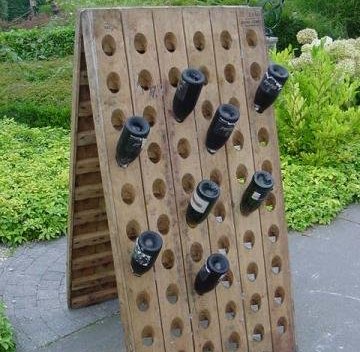Difference between sparkling wine - champagne - cava...
Wine with bubbles is called sparkling. They differ in origin and grape varieties.
 Prosecco is the name of the Italian grape variety (here we also find asti spumante and Lambrusco).
Prosecco is the name of the Italian grape variety (here we also find asti spumante and Lambrusco).
Spanish cava is fresh and fruity and less sweet than Prosecco.
German sparkling wine, whether or not B.A. (Bestimmte Anbaugebiete, specified regions) is called sekt.
And only because the word is so beautiful: South African vonkelwyn (sparkwine).
There are (with some nuances) 3 production methods for bubbles:
by injecting a quit wine with carbon dioxide bubbles, this will make it a simple wine with coarse bubbles,
by fermenting wine in a hermetically sealed container, causing the carbon dioxide to got absorbed in wine (called cuve close (closed cellar) or charmant);
by wine to undergo a secondary fermentation in the bottle. This méthode traditionnelle is called the méthode champenoise in the Champagne region.
It was long assumed that Dom Pérignon invented the champagne in 1697.
The process, however, was already described in a paper at the London Royal Society in 1662 by the British scientist, physicist and physician Christopher Merett. French Benedictines exported red quality wine and cheaper white wine to England. A load of the latter remained on the quays of the London docks. Due to the temperature conditions in wind and weather, these wines spontaneously fermented a second time. This created bubbles, et voilà!
The champagne method requires that the carbon dioxide (the bubbles) is exclusively the result of the second fermentation in the bottle. To obtain this, add champagne yeast and (white candy) sugar. Then the bottle is closed. The fermentation happens slow in the basement.
Approximately 4 grams of sugar per liter of wine is needed (residual sugar included) to form 1 bar pressure of carbon dioxide. In order to obtain 6 bar and maintain 5 bar 6 x 4 = 24 g g sugar is required.
It is safer to limit to 16 g of sugar per liter (for a good and secure pressure balance (3,5bar)).
To keep the cork in place, you can use a muzzle band.
There must remain a gas space of 30-35 mm between the stopper and the wine to absorb the pressure.
The bottles are marked with a white line on the base of the bottle. The dot serves as an orientation for the rotation of the bottle. The bottles remain upright a few days at 18-20°C, then they go horizontally with the white point down in the basement at 15-16°C.
After 6 weeks at this temperature, the fermentation is over. Colder is better to clarify.
In four to twelve months a depot or precipitation is formed.
Champagne can mature 2-4 years in the bottle without the risk of yeast flavor.
The formed precipitation has now to be token out of the bottle. The bottles are put on a bottle holder, of which the opening is such that the bottles are brought from almost horizontally to almost vertical.
The stopper of the bottle becomes increasingly facing down, the mark of all bottles in the same direction, this for 10 days. You should now turn every bottle every day a quarter short and fast by a left and right wrist back and forth.
The first bottles remain almost horizontal, they are brought very slow day by day to a vertically position at the end of the ’remuage’.
For the shooting or ’le dégorgement’ the wine must be strongly refrigerated to keep the carbonic better under control. The stop should always stay focused downwards. The freezing of the neck with the sludge is done with 2 parts freezer ice and 1 part of salt in an insulated vessel. The temperature should be -18°C to - 30°C. (Or use alcohol of 45° which freezes at -28°C.)
Freezing the wine with sediment in the bottleneck (3-5 cm) lasts from 7 minutes to 1 hour. Use gloves. The following operation must be done very quickly. All necessary equipment, including a disposable syringe with the dosing liqueur (that also cooled in the freezer) is ready at your fingertips.
The bottle can now be put upright, the stop with the attached frozen prop goes out, then quickly add some dosing liquer and close the bottle with stop and muzzle. The dosage determines whether the sparkling wine will become dry (brut) or sweet. It is a mixture of sugar and wine.
The final cork is placed with a muzzle or muselet. The carbon dioxide gas increases the pressure in the bottle up to 6 bar. Without muselet the cork would shoot away from the bottle.
Bottles of 750 and 900 gr. are good to 6 bar. For cider you can use lighter bottles.
‘If I drink a glass of wine, I become a different person, and that person always is very thirsty.’
The winemakers have a press conference.
